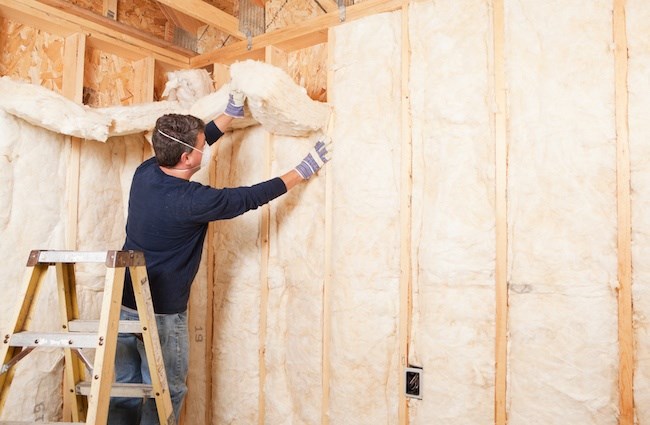THUNDER BAY – The City of Thunder Bay will continue exploring plans to incentivize climate-friendly home retrofits, after city council gave approval on Monday to move ahead with a program design study.
The city will apply to the Federation of Canadian Municipalities to fund 80 per cent of the roughly $175,000 study, which would work out the details of the potential program.
The city intends to work with credit unions to provide financing via long-term, low-interest loans for home improvements that significantly lower energy use.
Sustainability commissioner Summer Stevenson told council home retrofits are “critical” to reach the city’s goal of net zero greenhouse gas emissions by 2050, with household energy use accounting for around 19 per cent of the city’s emissions.
About 93 per cent of local homes are heated using natural gas, the biggest driver of household emissions.
Making a dent in household energy use requires substantial investment ranging well into the tens of thousands of dollars, but can bring substantial energy savings, according to a feasibility study the city carried out last year.
Mayor Bill Mauro expressed some hesitance, seeking assurances Monday’s vote would simply move forward with the program design study, and not approve a home retrofit program.
“There’s so many questions here… but tonight basically all we’re doing is confirming our [funding] application to FCM,” he said.
Going forward with the design study won’t tie the hands of the next council, said Coun. Andrew Foulds. He called a home retrofit program important to the city’s climate goals, but warned it will be a policy challenge to develop a program that will make a measurable impact.
“Whatever comes back for design of the program, my biggest fear is we have a program that doesn’t work – that looks good and perhaps makes sense, but the operationalization of it doesn’t work,” he said.
“I really hope, whether it’s municipal or federal dollars, if we’re going to spend close to $200,000, the design that comes back works.”
He also made the case for municipal action on climate, calling cities the “workhorses of confederation.”
“There are people out there who feel that the City of Thunder Bay can’t make much of an impact on climate change,” he said. “I guess globally, Thunder Bay at 110,000 [people], perhaps. But as one municipality after another municipality takes on the challenge… I really think we have a role to play.”
Parminder Sandhu from Enerva, the firm hired by the city to conduct the feasibility study, outlined three levels of retrofits evaluated.
Light retrofits involve work like comprehensive air sealing, upgrading home insulation, and installing high-efficiency appliances like a furnace, water heater, and air conditioner.
Deep retrofits would include further steps like energy recovery from air ventilation and high performance windows.
Looking at a typical detached home with a basement, no air conditioning, built prior to 1975, Sandhu said a light retrofit could cut household emissions from 8.8 to 4.7 metric tonnes of CO2 equivalent per year.
A deep retrofit would reduce emissions to 4.1 tonnes, while a full electrification package would bring it down to 1.3 tonnes.
Electrification, which includes moving heating and hot water off of natural gas, is estimated at $30,000 to $80,000, however.
Sandhu acknowledged it would typically raise household energy costs. In a scenario modeled in the feasibility study, a single detached, single storey, roughly 1,200 square foot home with basement would see electricity use nearly double, while reducing natural gas usage by nearly 90 per cent.
The cost of a deep retrofit, cutting emissions roughly in half, is more manageable, estimated at $21,500 to over $36,000 depending on the house, and could produce energy savings of $1,000 to upwards of $2,000 per year.
Stevenson also pointed to "co-benefits" like improved air quality without the use of natural gas. The business case for retrofits may also improve with changes in the energy landscape, including the ramping up of carbon pricing.
The city identified 17 retrofit scenarios in which homeowners would realize energy savings of over $1,000 a year.
Sandhu pointed to public support for the initiative, noting half of 150 respondents to a city survey supported a city-sponsored home retrofit program, while another quarter were interested in learning more.
The program would rely on regional credit unions to provide capital, while the city would provide a financial backstop. Several credit unions expressed interest, the city said.
The city considered but rejected other financing models including a local improvement charge, implemented in cities like Toronto, Ottawa, and Kingston to support retrofit programs, and an on-bill utility charge.
The program could be launched collaboratively with other regional municipalities, the city said, potentially making it more attractive to funders including the Federation of Canadian Municipalities
With the FCM covering around 80 per cent of costs for a program design study, the city will be left to fund around $35,000 in 2023.
Council approved the expenditure in a unanimous vote Monday.
Residents can learn more about the home energy retrofit project and other local environmental issues at a booth that will be set up by EarthCare, the city’s sustainability committee, at Live on the Waterfront events at Marina Park on July 20 and 27, and Aug. 3.
